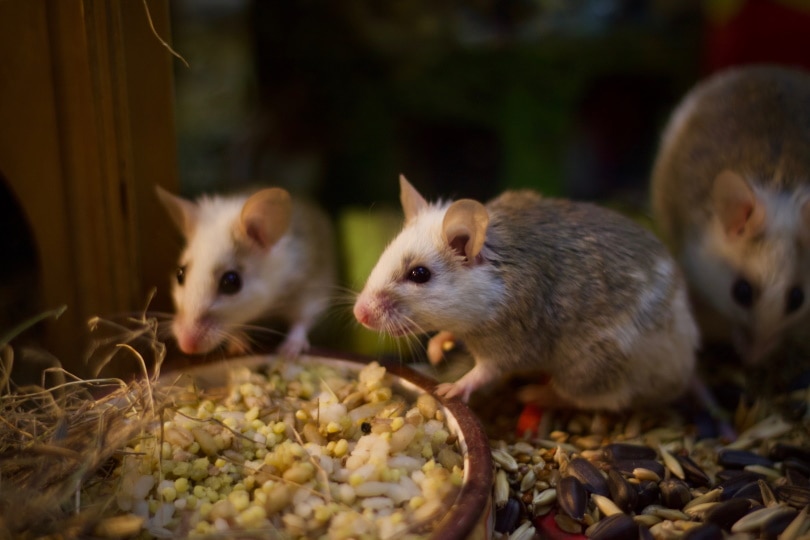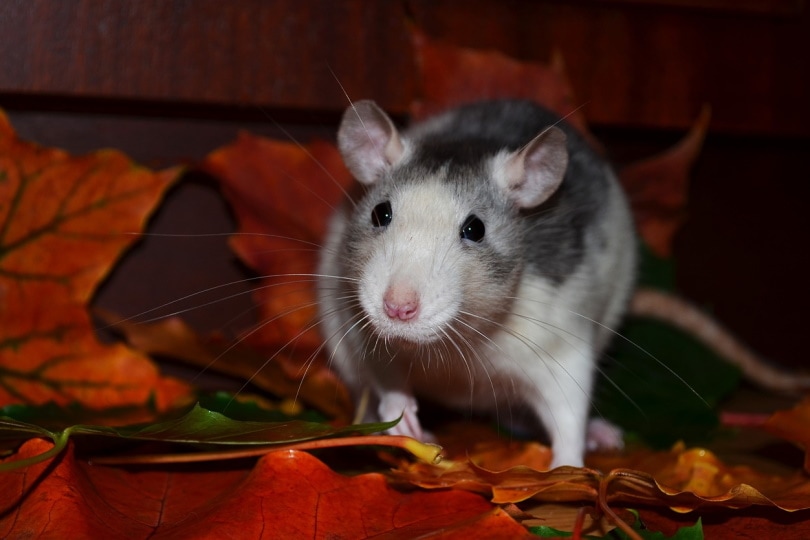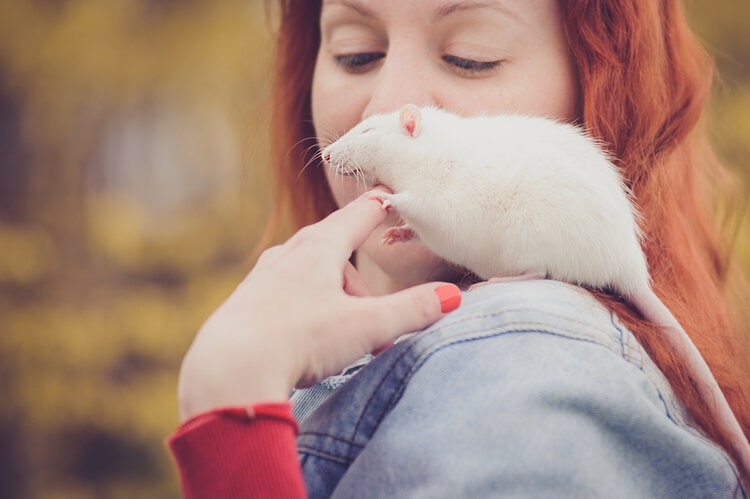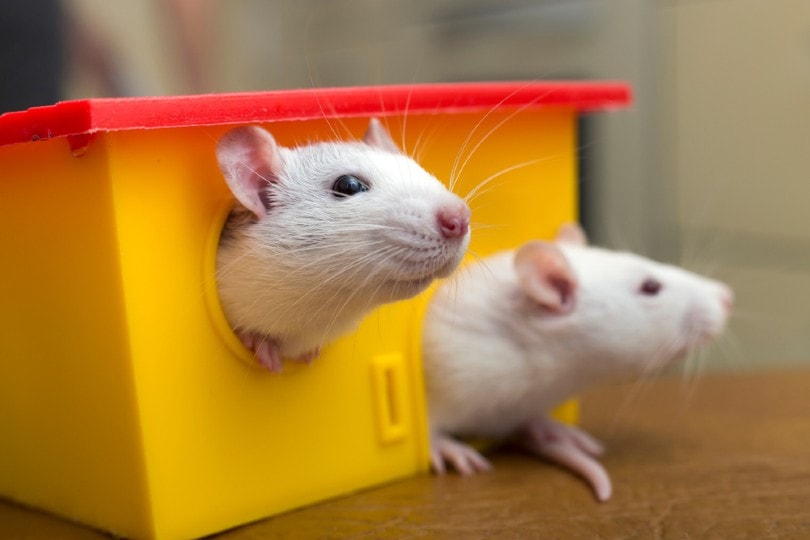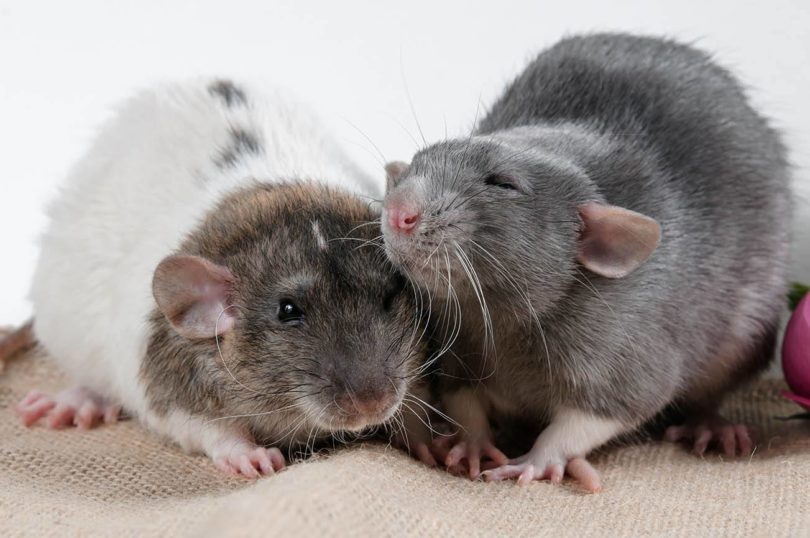
Pest control is big business in the United States. Experts forecast the market to top $26.2 billion by the end of 2023.1 Rodent control alone is expected to reach $217.4 million by 2025.2 Your first take on wild rats is likely negative. However, all organisms offer lessons about the amazing adaptations they have made to survive. Learning these stories is a fascinating endeavor in itself.
About 56 species of rats exist globally, although they originated in Asia and the Australia-New Guinea region. Rats are quite interesting animals, if just from an evolutionary point of view.
Primarily when we think of rats in our homes and cities we are thinking of Rattus rattus, the Black rat and Rattus norvegicus, the Brown rat. So, let’s take a look at some of the most fascinating rat facts out there.
The 15 Facts About Rats You Should Know
1. Rats Are Survivors
You have to give rats some credit. If nothing else, they are survivors. They have spread across the globe, inhabiting all the continents save Antarctica. They can live just about anywhere, especially where people live. Rats are omnivores and generalists, which gives them a competitive edge. They aren’t limited to specific habitats or food. That allows them to adapt to the presence of people, not unlike raccoons.
Rats eat just about anything, although some regional specialties tied to habitat and food availability exist. Another factor in their favor is their ability to chew through any type of material. They can get through concrete, sheetrock, brick, and wood. Even metal and steel are vulnerable if rusted. The rodent’s teeth grow throughout its entire life. Chewing is vital for keeping them in check.

2. Rats Have Unique Physical Traits
Many species have unique features, and rats are no exception. Their thin, naked tails stand out as the classic example. It’s also the means for these animals to control their internal body temperature. While they have belly buttons, they lack tonsils and gallbladders. Rats use their whiskers to navigate their world. However, they can also move each one individually.
Rats are also color blind, which seems odd given their diet. However, they are nocturnal animals, making this ability less vital to their existence.
3. Rats Might Not Have Spread the Plague
Scientists assumed rats were the vector for the catastrophic plague that killed millions in the 14 century. Recent research suggests that these rodents might not have been the main transmitter of this plague. The reason is that these animals would perish along with humans. No reports of mass die-offs exist. Instead, the data points to a more likely vector: humans.

4. Rabbit Numbers Don’t Compare to Rat Numbers
We often think of rabbits as the most prolific animal. They can produce an average of six young per litter. On the other hand, rats can have up to 22, with an average of eight or nine. Theoretically, that can translate into upward of 2,000 young from a single pair annually if left unchecked. However, mortality is high among rats. Many animals—including humans—prey on them.
Nevertheless, a Norway Rat can live an estimated 2 years in the wild. Meanwhile, they’re reproducing up to seven times a year, more than rabbits. Rats pose a formidable challenge to any animal that infringes upon their territory, combined with their generalist ecological strategy.
5. Rats Are Actually Clean Animals
Perhaps our first association with rats is that they are dirty animals that live in unsanitary conditions. After all, how could we think otherwise, given their propensity to live in sewers and any place where food is discarded? Surprisingly, though, these rodents are relatively clean. They spend much time grooming themselves, putting them on par with cats.

6. Rats Carry Many Diseases and Parasites
Rats are considered a menace and a pest because of the diseases and parasites they carry. They harbor germs, such as Salmonella and E. coli. After all, they roam in places where there is rotting food and likely come across sources of these pathogens often. However, statistics about the transmission of foodborne diseases are probably conservative, given the relatively low reporting rate.
Rats carry a host of diseases, from mild to life-threatening. The list includes hantavirus, rat bite fever, leptospirosis, and monkeypox. That makes controlling an infestation imperative to safeguard the health of the people and pets in your household.
7. Ancient Humans Lived Alongside Dog-Sized Rats
It seems as if rats and humans have always lived together, whether welcome or not. The rodents adapted to people and their habits. They also learned their habits and put their generalist feeding habits to use. Archaeological evidence shows that the animals in which humans co-existed weren’t the small animals we associate with them today. Instead, they were the size of small dogs, a living nightmare for anyone.
You can think of them as the dinosaurs of rodents. However, the battle wasn’t one-sided. Evidence exists that early humans ate rats. While it may seem distasteful to us, these animals are a form of micro-livestock in many parts of the world, including Africa. The prolific nature of these rodents makes it a viable choice.

8. Selective Breeding Equipped Many Dog Breeds to Hunt Rats
We have selectively bred canines to fill countless jobs, and one of the most important was hunting rats. The tenacity of Terriers makes them well-suited to this role. Many can dig quickly into the ground to find the pests lurking in their burrows. The American Kennel Club (AKC) even recognizes this talent in these dogs with their competitive earthdog trials. We can even go so far as to tip our hats to rats because of all the beloved canines their presence inspired.
9. Not Everyone Dislikes Rats
While we may dislike rats, that’s not the case with all cultures. A Hindu temple provides housing for over 20,000 rodents. They aren’t the maligned pest we think of them to the people who worship them. They are descendants of a goddess and worthy of this act. Remember that people who raised rats for food also probably had a different perspective of these animals.

10. Rats Have Favorite Foods, Too
Just because rats are generalists and omnivores doesn’t mean they don’t have food preferences. A study by Martin Schein, founder of the Animal Behavior Society, showed that rats have a penchant for comfort foods, such as scrambled eggs and macaroni and cheese. It’s worth mentioning that this data involved city-dwelling rodents.
11. You May Be a Rat
Chinese astrology embraces philosophy, yin and yang energy, and its elements in ways that are unique to the country’s culture. The people have practiced it for thousands of years. A different animal represents each year from a pool of 12 species. The rat is the first in the cycle. The last seven rat years were 1948, 1960, 1972, 1984, 1996, 2008, and 2020. The next is 2032.
Each animal represents different qualities. The rat’s main trait is wisdom, which may sound odd until you put it in context. Other attributes include quick-wittedness, sociability, and adaptability. That reads like a fitting description of an animal that has survived for thousands of years and survived seemingly insurmountable challenges.
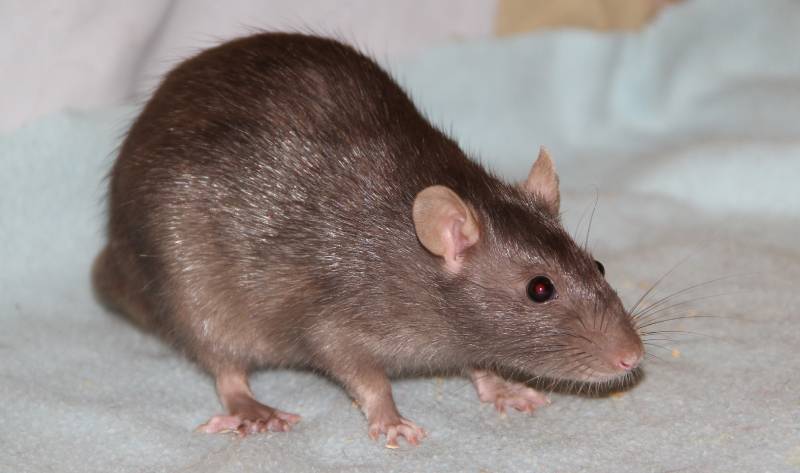
12. Some Rat Species Are Vulnerable or Endangered
We may think of rats as being abundant, perhaps too much in some places. However, that isn’t true of all species. According to the International Union for Conservation of Nature (IUCN), seven in the Rattus genus are endangered. Nine are either nearly threatened or vulnerable. The threats facing these animals are similar to what many species face, such as habitat loss and human encroachment. Despite their high reproductive rate, the populations of these rats continue to shrink and may one day become extinct.
13. Rats Benefit Humans More Than You May Realize
Humans owe a debt of gratitude to rats and other rodents for their valuable contribution to science and medicine. They account for about 95% of all research animals. Their biology offers several reasons. They’re easy to raise and handle. They’re also less problematic on several scores than when using other species, like rabbits, cats, or primates.
Scientists have selectively bred rats to make them better test subjects. These animals continue to astound us. One study found that trained rats could detect tuberculosis in children better than current screenings. Other research has identified the mechanism of atherosclerosis, or hardening of the arteries, a major risk factor for heart disease and the leading cause of death in the United States.

14. Rats Are Smarter Than You Think
We discussed admirable qualities associated with the Chinese zodiac sign of the rat. Research has backed up these claims with some compelling evidence of the animal’s intelligence. One study found that rats could visually process information on a par with primates. This ability can play a vital role in survival when object recognition is critical to life or death.
While rats aren’t necessarily smarter than people, other research has found that they are adept at problem-solving and circumventing challenges. This highlights the animal’s ability to evade pest control measures and continue to co-exist with humans. The takeaway is that these rodents are more intelligent than we may think.
15. Rats Have a Complex Social Structure
One factor that scientists attribute to humans’ success is our social structure. Research has shown that rats also have something akin to what we have. Adapting to captivity has reduced conflict that could affect survival. These rodents also learn from one another and experience peer pressure. These behaviors are a reflection of the colony lifestyle in which these animals live.
Another study found evidence of higher emotions, like regret, in rats. We know they can learn and remember pathways in the areas they occupy. The researchers gave the animals a choice involving their favorite foods. The rats that opted for a quick reward versus waiting for something more desirable acted like they rued their choice. That’s compelling as we associate this emotion only with humans.

Conclusion
Rats are interesting animals on several scores, even if they’re not high on anybody’s list of favorites. The critical thing underscoring everything we’ve discussed is the survival of these species. They have endured the stress of maintaining their numbers despite environmental pressures. They have also lived through concerted efforts to wipe them off the planet. They have succeeded as a survival success story.
Despite the negative points, rats are still important to ecological systems. As they are near the bottom of the food chain numerous other species rely at least partially on them as a food source.
Also see:
- Do Rats Have Feelings? Here’s What Science Says
- How Long Can Pet Rats Go Without Food and Water? What Science Says
Featured Image Credit: LankaP, Shutterstock


